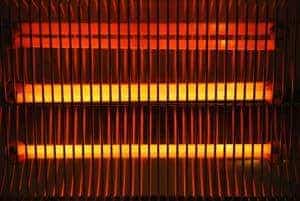Electrical heating elements are often used for teapots, irons, electric ovens, soldering irons, etc. When projecting designs with electric heating elements, you need to do some calculations that may seem difficult at first glance. But when looking more deeply, this becomes a simple task.

We know that electric heating is a result of the current flow in wire with some resistance. The resulting heat is work done by electric current. Work A(J) can be calculated by the formula:
A=U·I·t
Where U – Voltage(V), I – current(A), t – time(s). Then the amount of heat produced in the wire where electric current flows is calculated as follows:
Q=I2·R·t
Let’s calculate a simple problem. How much time do we need to boil 2 liters of water?
- Let’s take voltage U=220V;
- Heating element requires current I=4A;
- The efficiency coefficient is 80%;
- Starting temperature of the water is 20°C;
- Water specific heat – 4200(kJ/kg K).
First we have to calculate the amount of heat required to boil a water:
Qn=C·m·(tboil-t0)=4200·2·(100-20)=672000J;
With efficiency of 80% we get that wee need to produce
Q=Qn/n·=672000/0.8=840000J.
So we get that
Q=A=U·I·t
where time needed to boil:
t=Q/(U·I)=840000/(220·4)=954s=15min and 54s
When we know work produced by current during the time period – we can find the power:
P=A/t = UI = 880W





